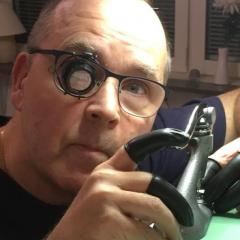Unitas Calibre 6325 Service Walkthrough
-
Recently Browsing
- No registered users viewing this page.
-
Topics
-
Posts
-
By LittleWatchShop · Posted
Back to lathes...I think you need the sherline mill and a ww lathe. I bought my sherline lathe simply to hold larger work pieces than a WW lathe. So far I have usedbit for making tools and not watch or clock parts. Done very little with the mill, but did experiment with making opinions. Lile yourself, I am a novice that does not shrink from trying the impossible...up to a point. There is a guy on NAWCC forum, Jerry Kieffer who is the master of the Sherline for horologi al work. -
By rjenkinsgb · Posted
Again, EDTA solution as I mentioned above, or Evaporust. They attack oxides but not good metal. After some hours, all the rust should have gone. -
Hi How can I clean this watch case rubber ring? It got the melted gasket on it...
-
By Sebastiaan · Posted
Thank you for the reading material -
By watchweasol · Posted
Hi one assumes by the addition of the pictures you have the technical sheet for this watch. As mentioned by @HectorLooi center wheel canon pinion .take it down again and install only the parts required to set the hacking and turn the hands checking at each stage for correct operation.
-





Recommended Posts